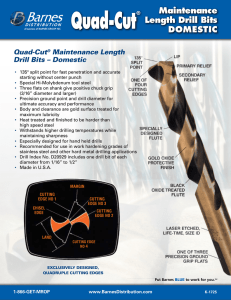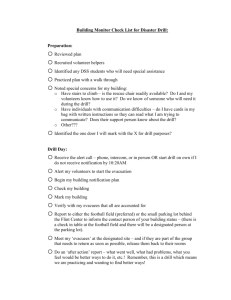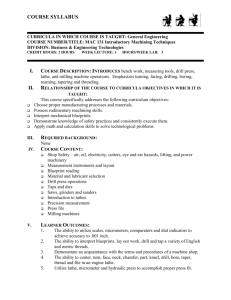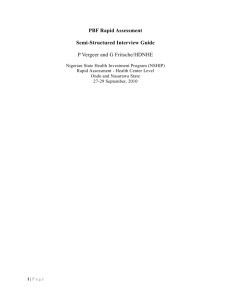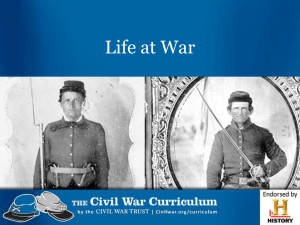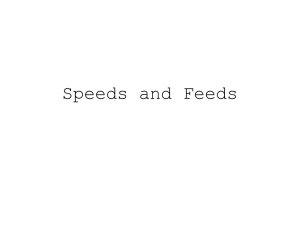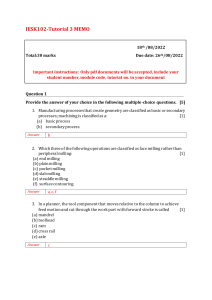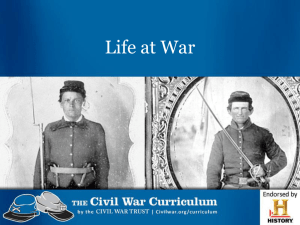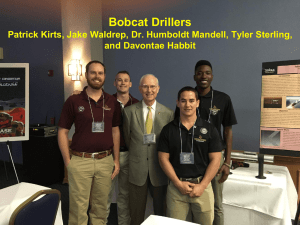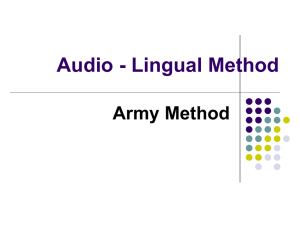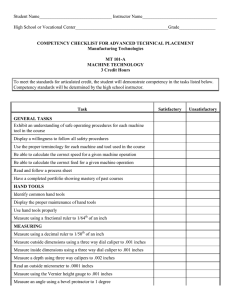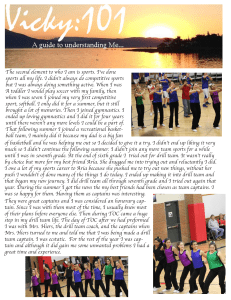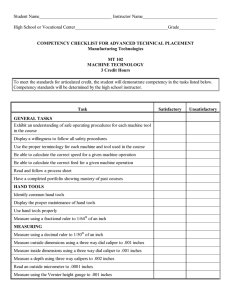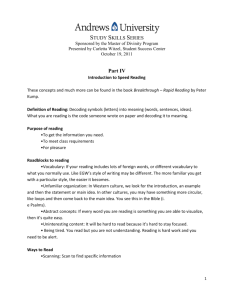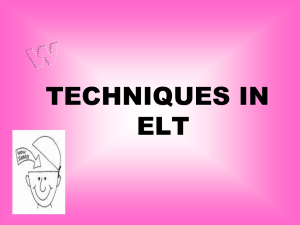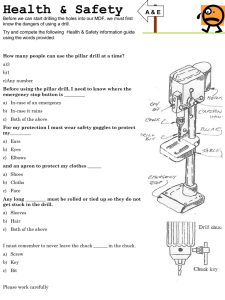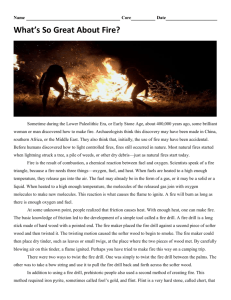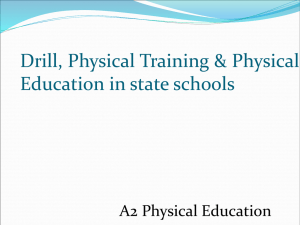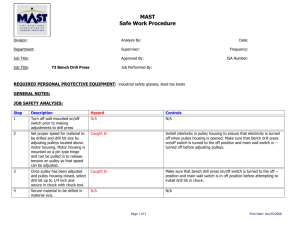Course Description
advertisement
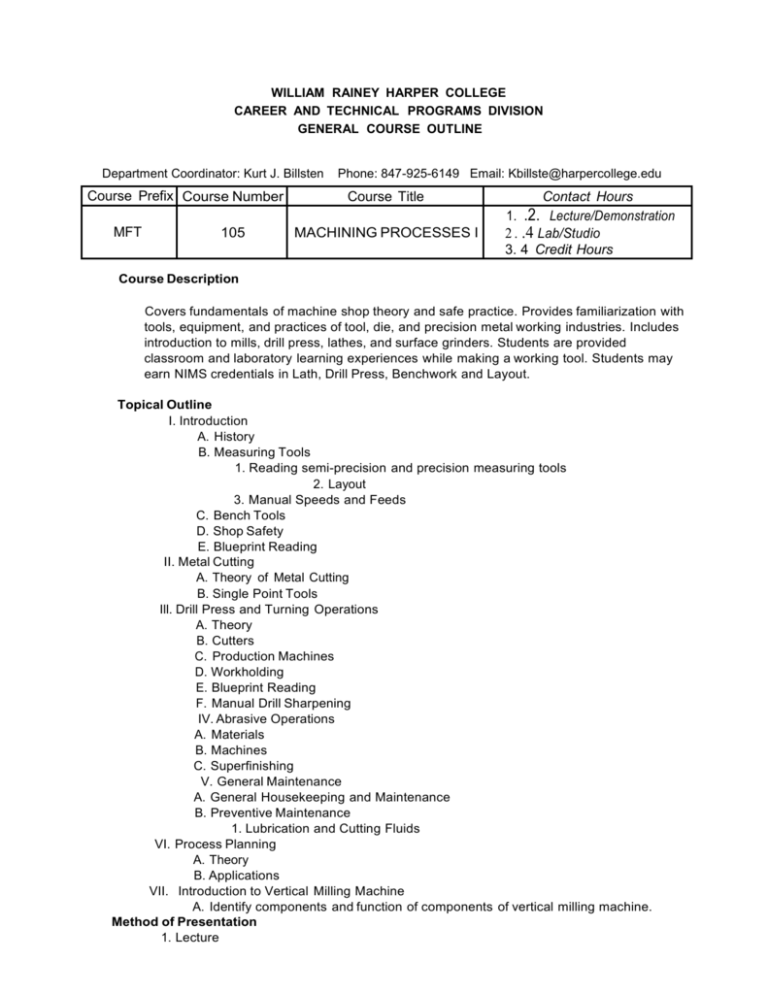
WILLIAM RAINEY HARPER COLLEGE CAREER AND TECHNICAL PROGRAMS DIVISION GENERAL COURSE OUTLINE Department Coordinator: Kurt J. Billsten Course Prefix Course Number MFT 105 Phone: 847-925-6149 Email: Kbillste@harpercollege.edu Course Title MACHINING PROCESSES I Contact Hours 1. .2. Lecture/Demonstration 2 . .4 Lab/Studio 3. 4 Credit Hours Course Description Covers fundamentals of machine shop theory and safe practice. Provides familiarization with tools, equipment, and practices of tool, die, and precision metal working industries. Includes introduction to mills, drill press, lathes, and surface grinders. Students are provided classroom and laboratory learning experiences while making a working tool. Students may earn NIMS credentials in Lath, Drill Press, Benchwork and Layout. Topical Outline I. Introduction A. History B. Measuring Tools 1. Reading semi-precision and precision measuring tools 2. Layout 3. Manual Speeds and Feeds C. Bench Tools D. Shop Safety E. Blueprint Reading II. Metal Cutting A. Theory of Metal Cutting B. Single Point Tools Ill. Drill Press and Turning Operations A. Theory B. Cutters C. Production Machines D. Workholding E. Blueprint Reading F. Manual Drill Sharpening IV. Abrasive Operations A. Materials B. Machines C. Superfinishing V. General Maintenance A. General Housekeeping and Maintenance B. Preventive Maintenance 1. Lubrication and Cutting Fluids VI. Process Planning A. Theory B. Applications VII. Introduction to Vertical Milling Machine A. Identify components and function of components of vertical milling machine. Method of Presentation 1. Lecture 2. Laboratory 3. Other: Video presentations and PowerPoint presentations Student Outcomes (The student should) 1. demonstrate the ability to operate in a safe environment and recognize the safety issues of machine operation. 2. demonstrate the ability to operate an engine lathe by producing a product assigned by the instructor and requiring basic turning operations. 3. demonstrate the ability to operate a vertical milling machine by setting up and producing a given project. 4. demonstrate the ability to operate a drill press by performing the operations of drilling, counterboring, tapping, etc. 5. demonstrate the ability to operate band saw and cutoff saws in support of assigned projects. 6. demonstrate the ability to operate a surface grinder. 7. demonstrate the ability to operate layout and inspection tools by producing and checking typical industrial products. 8. demonstrate a general understanding of machine shop theory and practice. 9. plan the sequence of operations to produce a part. 10. assess quality as described by the component detail through use of various hand instruments. 11. set up and operate engine lathes to perform straight and taper turning, face, center drill, drilling and threading. Method of Evaluation A. Typical classroom assessment techniques _lLProjects _Class participation _Objective tests _Studio/Lab performance _Final exam _Portfolios _Essays/Term papers _Oral examination _Research report B. Course content learning outcomes _Quizzes _Group participation _Case study assignments _Homework _Midterm Exam _lLExams C. Additional assessment information (optional). 1. Instructor will assess minimum acceptable levels of shop skill and accuracy against the National Institute for Metalworking Skills Standard Level 1. 2. Technical paper and technical notes Textbook 1. Required o Hoffman, Peter J., Hopewell, Eric S., Janes, Brian, Sharp, Jr., Kent M.. Precision Machining Technology. 1st Edition. Delmar, Cengage Learning, 2012 ISBN: 9781435447677 o Supplementary materials None o Software None Prepared by: Kurt Billsten Fall 2014 Language on the syllabi course materials developed by INAM funds: From the grant agreement’s Part IV Special Conditions, Item 15, Intellectual Property Rights, the following needs to be on all products developed in whole or in part with grant funds: “This workforce solution was funded by a grant awarded by the U.S. Department of Labor’s Employment and Training Administration. The solution was created by the grantee and does not necessarily reflect the official position of the U.S. Department of Labor. The Department of Labor makes no guarantees, warranties, or assurances of any kind, express or implied, with respect to such information, including any information on linked sites and including, but not limited to, accuracy of the information or its completeness, timelines, usefulness, adequacy, continued availability, or ownership. This solution is copyrighted by the institution that created it. Internal use, by an organization and/or personal use by an individual for non-commercial purposes, is permissible. All other uses require the prior authorization of the copyright holder.”
